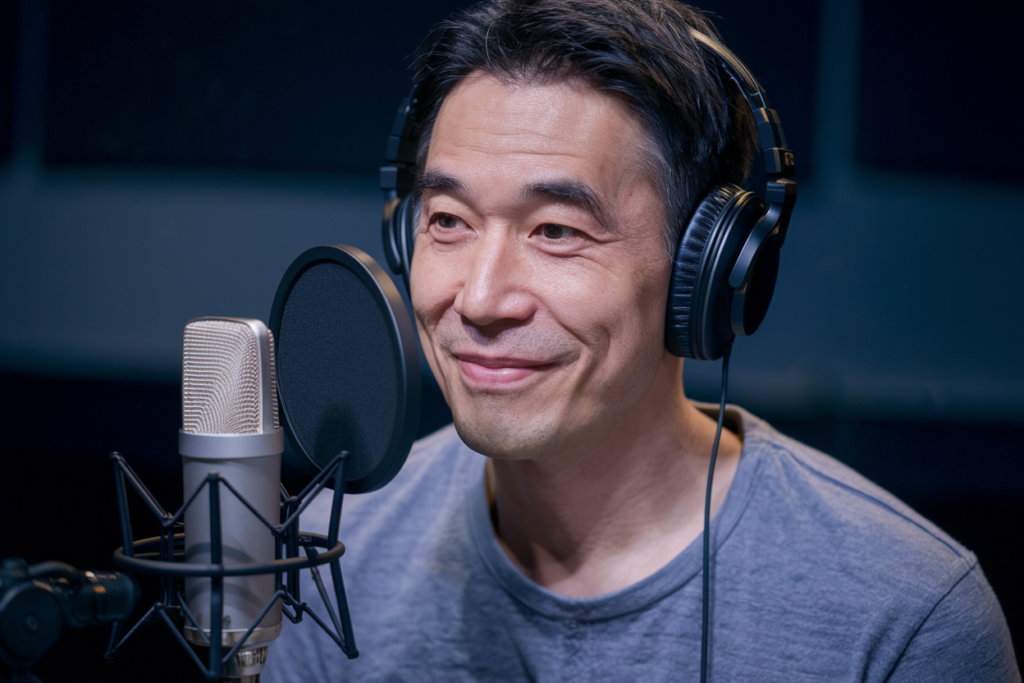Key Takeaways
- Diverse Dialects: Japan features a variety of regional dialects, known as hogen, each with unique pronunciation, vocabulary, and grammar that reflect the cultural diversity across the country.
- Kansai vs. Kanto: The Kansai dialect is characterized by its relaxed tone and playful expressions, while the Kanto dialect serves as the linguistic standard with clear enunciation and direct communication styles.
- Cultural Influence: Geographic isolation has led to distinct linguistic traits in different regions, enriching local identities and preserving traditional expressions through oral traditions.
- Social Dynamics: Dialects not only influence communication styles but also shape individual identity and community pride among speakers, fostering connections rooted in cultural heritage.
- Learning Nuances: Understanding regional variations enhances your language skills and deepens your appreciation for Japan’s rich tapestry of culture and communication.
Ever wondered why some Japanese speakers sound so different from one another? Regional Japanese language differences can be fascinating and sometimes confusing. From the distinct dialects of Kansai to the unique expressions found in Hokkaido, each area boasts its own linguistic flair that shapes how people communicate.
Overview Of Regional Japanese Language Differences
Japanese language differences across regions reflect the rich cultural diversity within Japan. Each area, from Hokkaido in the north to Okinawa in the south, showcases unique dialects known as hogen. These dialects vary significantly in pronunciation, vocabulary, and even grammar.
In Kansai, for instance, you might encounter distinct expressions and a more relaxed intonation compared to the standard Tokyo dialect. Locals often use phrases like „akan” (meaning „no good”) or „omae” (a casual term for „you”), which can sound unfamiliar to those accustomed only to standard Japanese.
Conversely, the Tohoku region features its own set of linguistic traits. Here, you’ll find softer pronunciations and unique words that reflect local traditions and lifestyles. The variations can lead to misunderstandings among speakers from different areas but also enrich interactions by adding layers of meaning.
Understanding these regional differences is essential for effective communication. Whether you’re learning Japanese or engaging with native speakers in various contexts, recognizing these nuances enhances your experience. Embracing the variety not only fosters connection but also deepens your appreciation of Japan’s diverse cultural landscape.
Historical Context
The historical context of the Japanese language reveals a complex evolution shaped by geography, culture, and social dynamics. Recognizing this background enhances understanding of today’s regional dialects.
Evolution Of The Japanese Language
The Japanese language evolved through several significant phases, beginning with Old Japanese around the 8th century. This period saw early forms of poetry and literature that laid the groundwork for modern expressions. Middle Japanese emerged next, from the 12th to the 16th centuries, introducing new vocabulary influenced by contact with China and Western cultures.
Modern Japanese developed in the late 19th century during Japan’s Meiji Restoration when efforts to standardize the language took place. While Tokyo dialect often served as a linguistic benchmark, regional dialects (hogen) retained unique characteristics that reflect local identities.
Influences Of Geography And Culture
Geography plays a crucial role in shaping Japan’s diverse dialects. For instance, mountainous regions or islands often fostered isolation, leading to distinct linguistic features. Cultural influences also significantly affect communication styles; for example, traditional practices and societal values contribute to variations in expression across different areas.
Local communities maintain these distinctions through oral traditions, ensuring that unique phrases and pronunciations endure over time. Understanding these geographic and cultural influences can deepen your appreciation for how language connects people within Japan’s rich tapestry of life.
Dialect Variations Across Japan
Japan’s regional dialects, or hogen, create a fascinating tapestry that reflects the country’s cultural diversity. Each area boasts its unique expressions and pronunciations, enriching communication styles across the nation.
Kansai Dialect
Kansai dialect stands out with its distinctive intonation and phrasing. It’s often perceived as more casual compared to the Tokyo standard. You’ll notice words like „akan” (meaning no or not good) and playful expressions that can make conversations feel lively. The Kansai region includes cities like Osaka and Kyoto, where local humor frequently influences speech patterns.
Kanto Dialect
Kanto dialect serves as the linguistic benchmark for most of Japan. Predominantly spoken in Tokyo and surrounding areas, it features clear enunciation and a formal tone. This dialect prioritizes directness; you might hear phrases like „shitteiru?” (Do you know?). Its widespread use makes it essential for understanding mainstream media content.
Dialects Of Northern Japan
Northern Japan showcases several dialects that carry distinct characteristics influenced by local history and geography. For instance, the Tohoku region features softer pronunciations and unique vocabulary reflective of its rural culture. Words like „dake” (only) are commonly used here but might confuse those unfamiliar with the nuances of this way of speaking.
Dialects Of Southern Japan
Southern Japanese dialects demonstrate remarkable variations from region to region due to geographical isolation. In places like Kyushu, you’ll encounter rich tonal differences alongside traditional expressions unique to each locality. These dialects often emphasize warmth in conversation; locals may use affectionate terms that foster community bonds while also showcasing their heritage.
Understanding these regional dialects enhances your appreciation for how language connects people throughout Japan’s vast landscape, making every interaction an enriching experience.
Linguistic Features
Regional differences in the Japanese language showcase unique linguistic features that make communication rich and varied. Understanding these nuances enhances your appreciation for Japan’s diverse culture.
Pronunciation Differences
Pronunciation differs significantly across regions. Kansai speakers often use a more relaxed intonation, giving their speech a casual and engaging quality. In contrast, the Kanto region tends to favor clearer enunciation, which aligns with its status as the linguistic standard. This variation can impact understanding, especially for non-native speakers trying to navigate interactions.
Vocabulary Variations
Vocabulary showcases regional uniqueness through distinct words and phrases. For instance, while „ouka” (桜) refers to cherry blossoms universally in Japan, Kansai dialect might introduce local terms like „sakura” or playful expressions that reflect regional traditions. The Tohoku region also has vocabulary shaped by local customs, making it essential for learners to familiarize themselves with these variations for effective communication.
Grammar Distinctions
Grammar distinctions further highlight regional differences in Japanese. While standard Japanese follows specific grammatical rules consistently, some dialects introduce unique structures or particle usage that can confuse learners. Kansai speakers might drop particles or use alternative forms of verbs that signal familiarity or informality not present in standard grammar. Recognizing these distinctions helps you understand and appreciate conversational dynamics better.
Understanding these linguistic features not only enriches your knowledge of the Japanese language but also deepens your connection with its cultural diversity throughout various regions.
Social Implications
Regional differences in the Japanese language influence social interactions and community dynamics. Dialects shape not only how people communicate but also how they perceive one another based on linguistic cues.
Effects On Communication
Communication varies significantly across Japan’s regions due to dialectal differences. For instance, Kansai dialect speakers often employ a casual tone that fosters a friendly environment, making conversations feel more approachable. In contrast, Kanto dialect speakers prioritize clarity and directness, which can come off as more formal. These variations can affect relationships; understanding local expressions and intonations allows for smoother interactions and helps avoid misunderstandings. When you adapt to regional nuances, you connect better with locals and enhance your overall experience.
Identity And Regional Pride
Dialect shapes identity in profound ways across Japan’s diverse landscape. Many individuals take pride in their regional dialects as symbols of cultural heritage. Local phrases or unique vocabularies reflect traditions that strengthen community bonds and foster a sense of belonging among residents. By embracing these linguistic characteristics, you gain insight into the values and customs cherished by different communities. Such pride doesn’t just exist within conversations; it permeates through festivals, art forms, and cuisine, creating a rich tapestry of culture that thrives on diversity.
Recognizing these social implications enriches your understanding of Japanese language dynamics while highlighting the importance of cultural context in communication.
Conclusion
Exploring the regional differences in the Japanese language reveals a rich tapestry of cultural identity and communication styles. Each dialect offers unique expressions and nuances that contribute to Japan’s linguistic diversity. Understanding these variations not only enhances your grasp of the language but also deepens your appreciation for local customs and traditions.
As you navigate through different regions, embracing these dialects can enrich your interactions and foster connections with native speakers. Recognizing the significance of hogen allows you to engage more meaningfully with Japan’s vibrant culture, making your journey through this fascinating language even more rewarding.
Frequently Asked Questions
What are the main regional dialects in Japan?
Japan has several main regional dialects, known as hogen. Notable ones include Kansai, characterized by its casual tone and lively expressions; Kanto, the linguistic standard with clear enunciation; Tohoku, featuring softer pronunciations; and Southern dialects from Kyushu, which showcase rich tonal differences.
How do these dialects reflect cultural diversity in Japan?
Each Japanese dialect reveals unique cultural identities tied to their regions. They incorporate local traditions and expressions that highlight community values, historical context, and geographical influences. This diversity enriches communication styles across Japan.
Why is understanding these dialects important for language learners?
Understanding regional dialects helps language learners appreciate the richness of Japanese culture. It enhances communication skills by familiarizing them with various expressions and pronunciation styles, fostering smoother interactions with native speakers.
How have historical factors influenced Japanese language development?
The Japanese language evolved significantly over time due to geography, culture, and social dynamics. From Old Japanese to Middle Japanese, it was shaped by contact with China and Western cultures before standardization during the Meiji Restoration in the late 19th century.
What are some key features that distinguish these regional dialects?
Key features include pronunciation variations—Kansai uses a relaxed intonation while Kanto opts for clarity—unique vocabulary reflecting local traditions, and distinct grammar structures that can be confusing for learners but enrich understanding of each region’s identity.
How do dialects affect social interactions in Japan?
Dialect usage influences social dynamics; for example, Kansai speakers create a friendly atmosphere with their casual tone while Kanto speakers prioritize formality through directness. Adapting to local expressions can enhance relationships and ease communication within communities.
Can pride in a regional dialect impact one’s identity?
Yes! Many individuals take pride in their regional dialect as symbols of cultural heritage. This pride fosters a sense of belonging within communities and contributes positively to self-identity through shared phrases and traditions relevant to their region.







